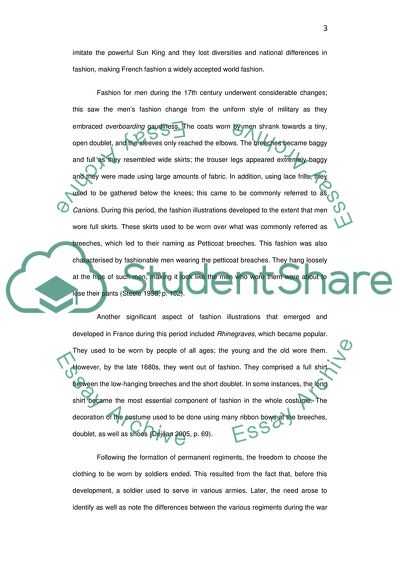Cite this document
(“Fashion Illustrations in France during the 17th & 18th Century Essay”, n.d.)
Fashion Illustrations in France during the 17th & 18th Century Essay. Retrieved from https://studentshare.org/visual-arts-film-studies/1597052-fashion-illustrations-in-france-during-the-17th-18th-century
Fashion Illustrations in France during the 17th & 18th Century Essay. Retrieved from https://studentshare.org/visual-arts-film-studies/1597052-fashion-illustrations-in-france-during-the-17th-18th-century
(Fashion Illustrations in France During the 17th & 18th Century Essay)
Fashion Illustrations in France During the 17th & 18th Century Essay. https://studentshare.org/visual-arts-film-studies/1597052-fashion-illustrations-in-france-during-the-17th-18th-century.
Fashion Illustrations in France During the 17th & 18th Century Essay. https://studentshare.org/visual-arts-film-studies/1597052-fashion-illustrations-in-france-during-the-17th-18th-century.
“Fashion Illustrations in France During the 17th & 18th Century Essay”, n.d. https://studentshare.org/visual-arts-film-studies/1597052-fashion-illustrations-in-france-during-the-17th-18th-century.


